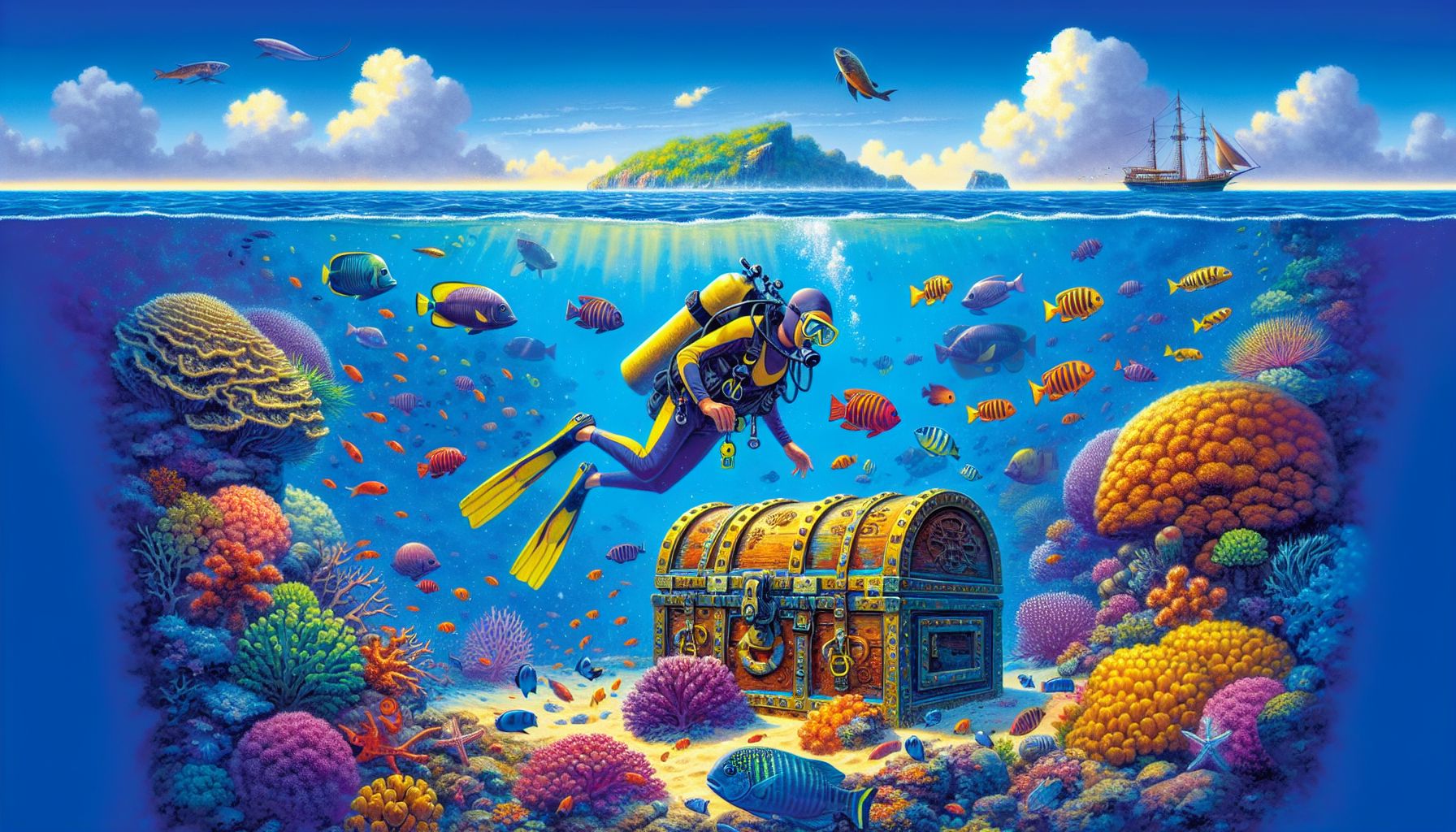Scuba diving is a captivating activity that allows us to explore the vast underwater realm, teeming with life and wrecks shrouded in mystery. Whether you are a beginner taking your first breath underwater or a seasoned diver seeking new adventures, scuba diving provides endless opportunities to witness the beauty and complexity of the ocean’s ecosystems.
In this comprehensive guide, we will dive into the essentials of scuba diving – from gearing up and getting certified to conserving marine life and exploring the ultimate dive locations. With over 70% of our planet covered by water, there’s a whole world beneath the waves waiting to be discovered.
Why Scuba Dive?
Many are drawn to scuba diving for the sense of adventure and tranquility it offers. It’s an experience unlike any other—where gravity seems to lose its grip, and you can glide effortlessly alongside colorful fish, intricate coral formations, and shipwrecks that tell stories of the past. Diving offers a unique blend of thrill and serenity, making it a hobby that can satisfy both adrenaline junkies and those searching for peaceful escapes.
Getting Certified: Your Passport to the Underwater World
Before you can start diving, you need to become certified. The certification process ensures that you have the necessary skills and knowledge to dive safely.
Choosing a Certification Agency
There are several scuba diving certification organizations, such as PADI (Professional Association of Diving Instructors), NAUI (National Association of Underwater Instructors), and SSI (Scuba Schools International). While each has its curriculum, they all adhere to international safety standards.
The Certification Process
Certification usually involves three phases:
- Academic Training: Learn the basic principles of scuba diving, typically through classroom sessions or online modules.
- Confined Water Dives: Practice diving skills in a pool or calm shallow water under the supervision of an instructor.
- Open Water Dives: Apply what you’ve learned by completing dives in an open water environment, such as a lake or ocean.
Upon successful completion, you will receive a certification card (‘C-Card’), which is your ticket to dive around the world.
Essential Scuba Gear: What You Need to Explore Beneath the Waves
To scuba dive, you’ll need specific equipment that enables you to breathe, see, and move underwater. Here’s a breakdown of the essential gear:
- Mask: A high-quality, well-fitting mask is vital for clear vision underwater.
- Snorkel: Ideal for conserving air while on the surface.
- Fins: Fins provide efficient propulsion through the water.
- Regulator: This device delivers air from your tank to your mouth.
- Buoyancy Control Device (BCD): The BCD allows you to control your buoyancy and maintain neutral buoyancy underwater.
- Scuba Tank: Tanks hold the compressed air you breathe while diving.
- Wetsuit or Drysuit: Thermal protection is necessary for most diving environments.
- Dive Computer: A useful tool that monitors your depth, bottom time, and decompression status.
- Weight System: Weights help counteract your natural buoyancy and make descent easier.
Best Practices for a Safe Scuba Diving Experience
Safety should always be your top priority when scuba diving. Here are essential safety tips to follow:
- Never dive alone – use the buddy system.
- Check your equipment thoroughly before each dive.
- Plan your dive and dive your plan.
- Stay within the limits of your training and experience.
- Pay close attention to your air supply.
- Monitor your no-decompression limits using your dive computer.
- Ascend slowly and perform safety stops to avoid decompression sickness.
- Stay hydrated and avoid alcohol before diving.
- Be aware of local marine life and currents.
Respect for the Ocean: The Ethos of Conservation
As divers, we have a responsibility to protect the aquatic environment. Practices such as responsible fish-feeding, not touching marine life, anchoring responsibly, collecting trash, and supporting conservation efforts are just some ways divers can contribute to preserving ocean health.
The Best Dive Locations: From Coral Reefs to Shipwrecks
The world is filled with extraordinary dive sites. Here are just a few you might consider for your next underwater adventure:
- Great Barrier Reef, Australia: Explore the largest coral reef system on the planet.
- Blue Hole, Belize: Dive into this massive marine sinkhole renowned for its crystal-clear waters.
- SS Thistlegorm, Red Sea: Visit one of the world’s most famous shipwrecks loaded with historical artifacts.
- Similan Islands, Thailand: Experience diverse marine life and vibrant coral reefs.
- Palau: Marvel at the underwater wonderland that is home to more than 1,500 species of fish.
Diving In: The Journey Begins
As we conclude this ultimate guide to scuba diving, it’s clear that diving is much more than a sport or hobby—it’s a doorway to an enchanted world that many will never witness. Whether it’s the excitement of a deep dive, the tranquility of a coral garden, or the thrill of an encounter with a gentle giant of the sea, every dive is a step deeper into the extraordinary.
Sources
- PADI, “Start Diving,” https://www.padi.com
- National Ocean Service (US), “Corals,” https://oceanservice.noaa.gov/facts/coral.html
- Project AWARE, “Dive Against Debris,” https://www.projectaware.org/diveagainstdebris
So gear up, get certified, and take the plunge to unlock the mysteries of the ocean with scuba diving. Adventure awaits beneath the waves, and now you have the knowledge to dive in with confidence and respect for the underwater world.
